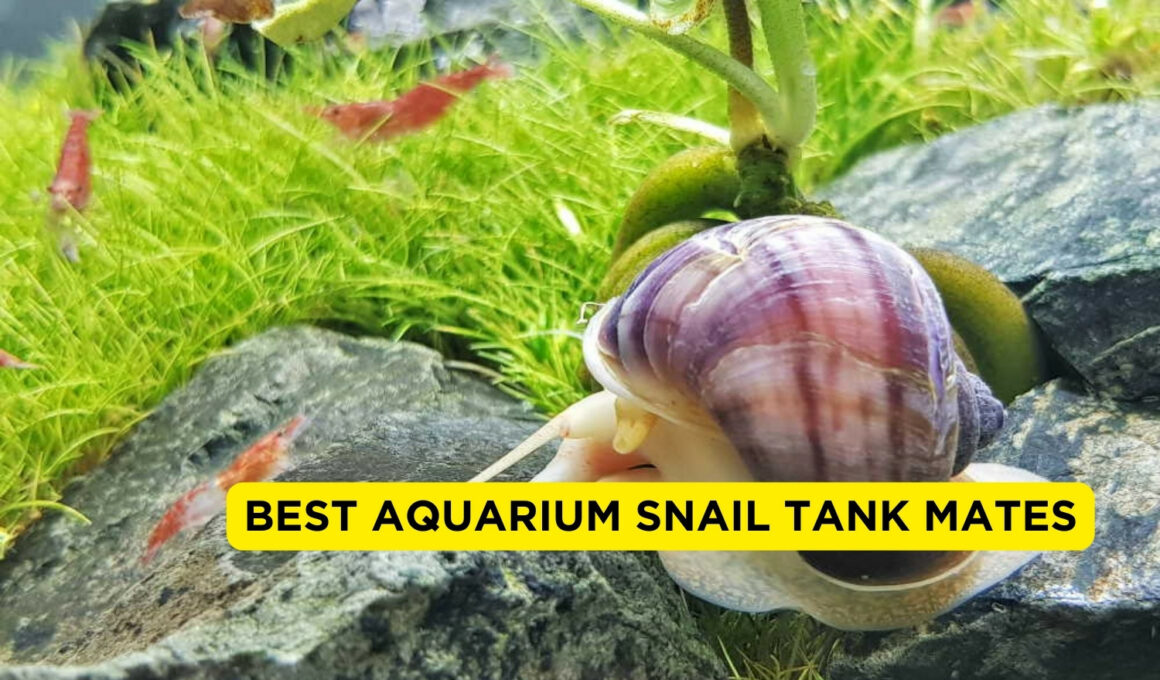In this article Show
As an experienced fishkeeper, I understand the unique role these gentle creatures play in our aquatic setups. Snails, with their varied shapes and intriguing behaviors, are not just fascinating to watch, but they also contribute significantly to the aquatic ecosystem’s health.
They are natural cleaners, helping manage algae growth and detritus in the tank. When it comes to creating a harmonious home for these slow-moving beauties, choosing the right tank mates is crucial.
It’s about finding a balance where the snails can thrive without stress, and their companions can coexist peacefully. This guide is tailored to help you make informed decisions about the best companions for your aquarium snails, ensuring a healthy and vibrant environment for all your aquatic inhabitants.
Factors to Consider When Choosing Tank Mates for Snails
When selecting tank mates for your aquarium snails, it’s crucial to consider a few key factors to ensure a healthy and stress-free environment for all your aquatic pets. Here are the primary considerations:
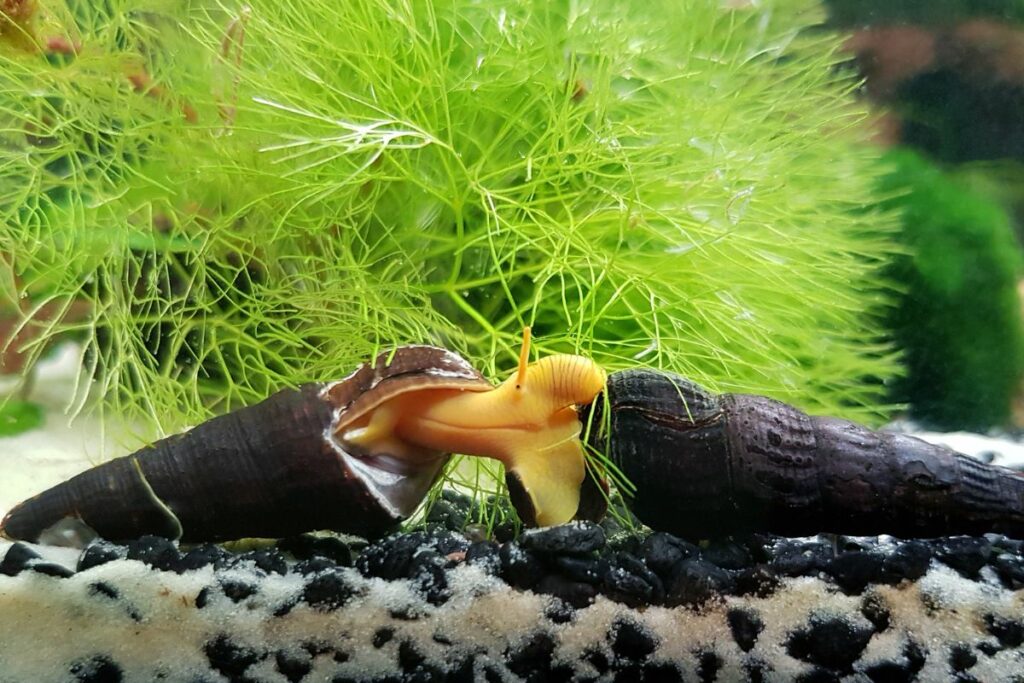
Compatibility Based on Water Parameters
Snails, like all aquatic creatures, have specific needs regarding water chemistry. It’s vital to choose tank mates that thrive in similar water conditions.
For instance, if your snail species prefers slightly alkaline water with a pH above 7, ensure that their tank mates also favor such conditions. The same principle applies to water temperature; a tropical snail species will require warm-water companions.
Behavioral Compatibility
The temperament of potential tank mates is a critical factor. Snails are peaceful and non-aggressive, making them vulnerable to nippy or predatory fish. It’s best to pair them with other gentle and non-territorial species.
For example, community fish like small tetras or guppies are usually safe choices, as they are unlikely to bother snails. On the other hand, larger, more aggressive fish can stress or harm snails and should be avoided.
Size and Space Requirements
The size of your aquarium and the size of the potential tank mates play a significant role. Snails need space to move around and graze, and overcrowding can lead to stress and health issues.
Choose tank mates that are appropriate for the size of your aquarium. Smaller, less active fish are generally better for smaller tanks, while larger tanks can accommodate more significant or more active species.
Best Aquarium Snail Tank Mates
1. Guppies
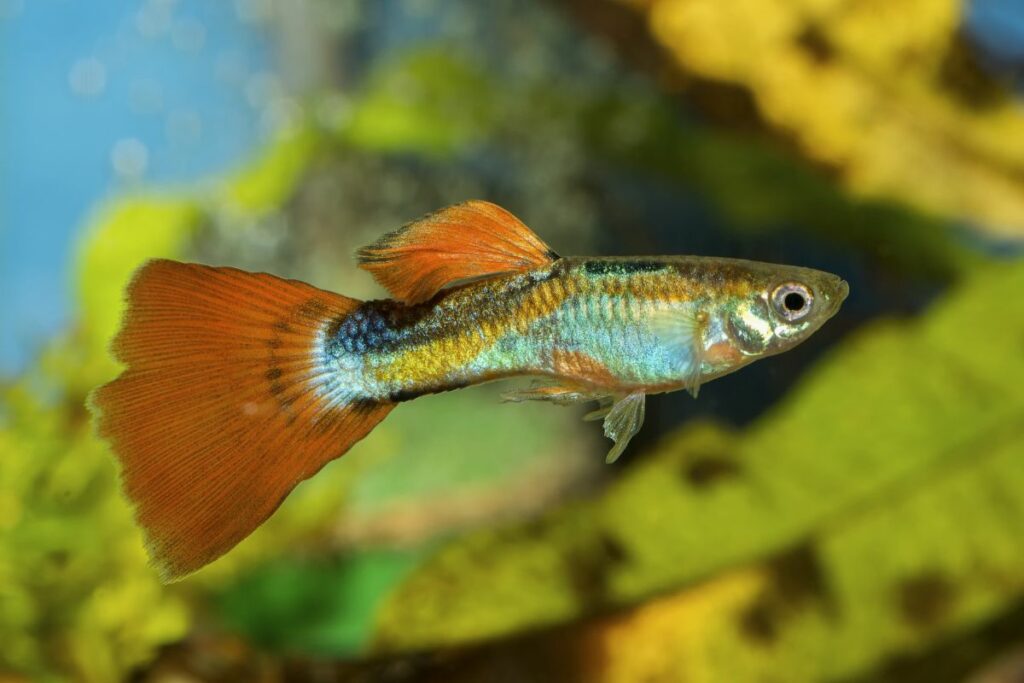
| Characteristics | Details |
| Size | Up to 2.5 inches |
| Diet | Omnivore |
| Temperament | Peaceful |
| Care Level | Easy |
| Minimum Tank Size | 10 gallons |
Guppies are an excellent choice for snail tank mates due to their small size and peaceful nature. They are easy to care for, making them ideal for both novice and experienced aquarists. With a diet that includes both plant and animal matter, they aren’t prone to bothering snails for food.
Their bright colors and active swimming patterns add vibrancy to an aquarium without disrupting the more placid snails. The minimal 10-gallon tank size requirement ensures enough space for both guppies and snails to coexist comfortably.
2. Neon Tetras
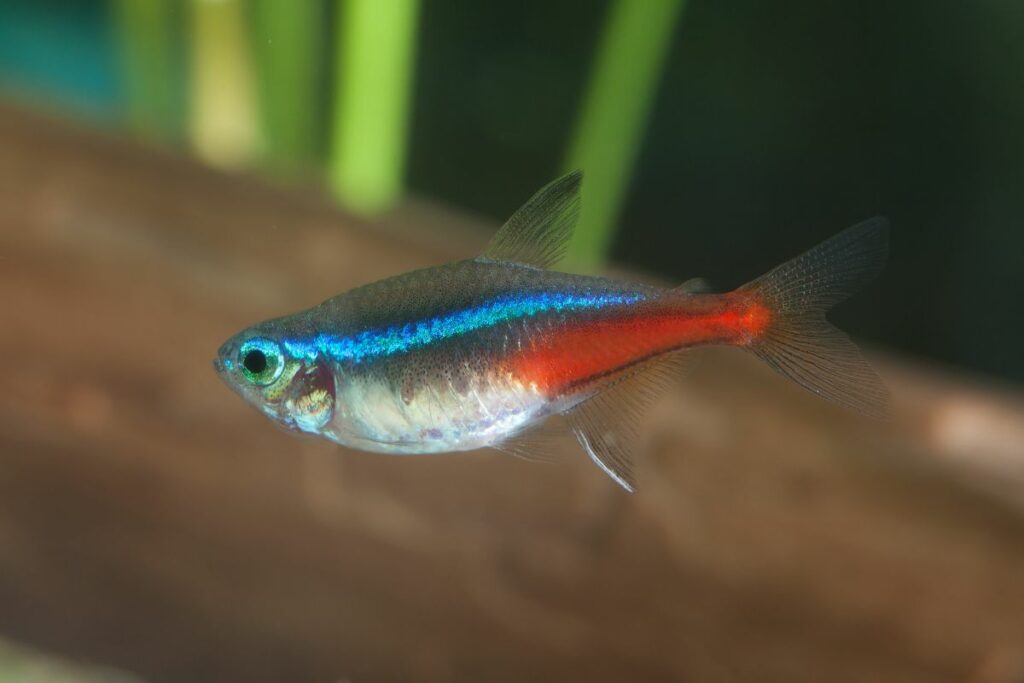
| Characteristics | Details |
| Size | Up to 1.5 inches |
| Diet | Omnivore |
| Temperament | Peaceful |
| Care Level | Easy |
| Minimum Tank Size | 10 gallons |
Neon Tetras are an excellent choice as tank mates for snails. Their small size and peaceful temperament make them well-suited for a community aquarium. These vibrant fish are omnivores, feeding on a variety of foods without posing any threat to snails.
Neon Tetras prefer to swim in schools, adding a dynamic visual element to the tank while maintaining a serene environment. They require moderate care, making them a good choice for aquarists with some experience. A minimum tank size of 10 gallons provides ample space for these active swimmers to coexist harmoniously with snails.
3. Corydoras Catfish
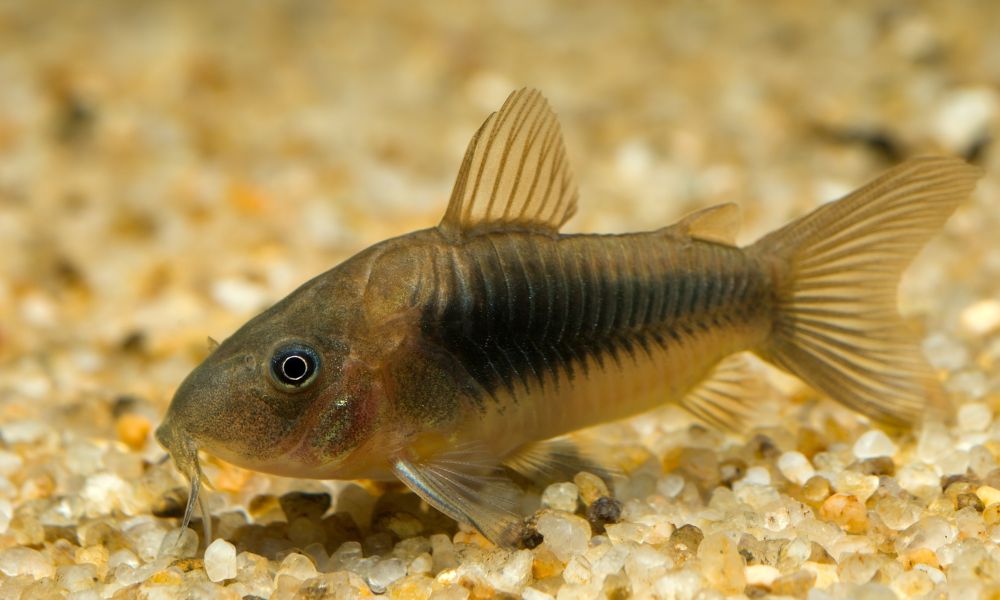
| Characteristics | Details |
| Size | Up to 3 inches |
| Diet | Omnivore (bottom feeder) |
| Temperament | Peaceful |
| Care Level | Easy |
| Minimum Tank Size | 20 gallons |
Corydoras Catfish is an ideal choice for companions to snails in an aquarium. Their peaceful nature and bottom-dwelling habits make them non-intrusive to snails. These catfish are easy to care for, and suitable for both beginners and experienced fishkeepers.
As omnivores that feed mainly at the bottom, they complement the snails’ scavenging behavior without competing for food. A minimum tank size of 20 gallons is recommended to provide sufficient space for their exploration and to ensure a comfortable coexistence with snails.
4. Amano Shrimp
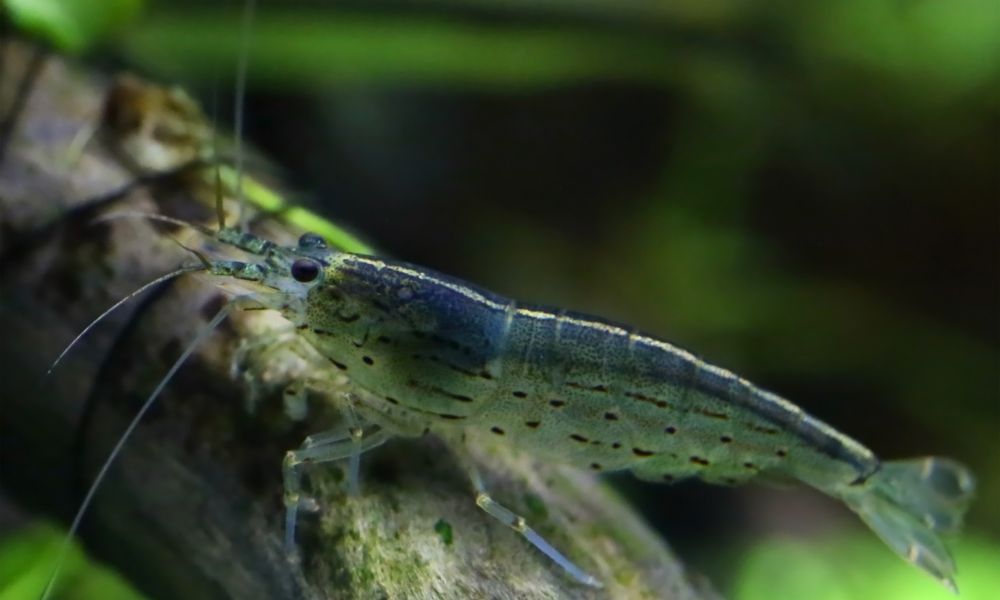
| Characteristics | Details |
| Size | Up to 2 inches |
| Diet | Omnivore (algae eater) |
| Temperament | Peaceful |
| Care Level | Easy |
| Minimum Tank Size | 10 gallons |
Amano Shrimp are an excellent selection for companions to snails in an aquarium. Known for their peaceful behavior, these shrimp are easy to care for, fitting well into both novice and experienced aquarists’ tanks.
Amano Shrimp are avid algae eaters, which helps maintain a clean tank environment, beneficial for both the shrimp and snails. Requiring a minimum of 10 gallons of tank space, they offer a harmonious coexistence with snails, sharing similar habitats and food sources without competing.
5. Angelfish
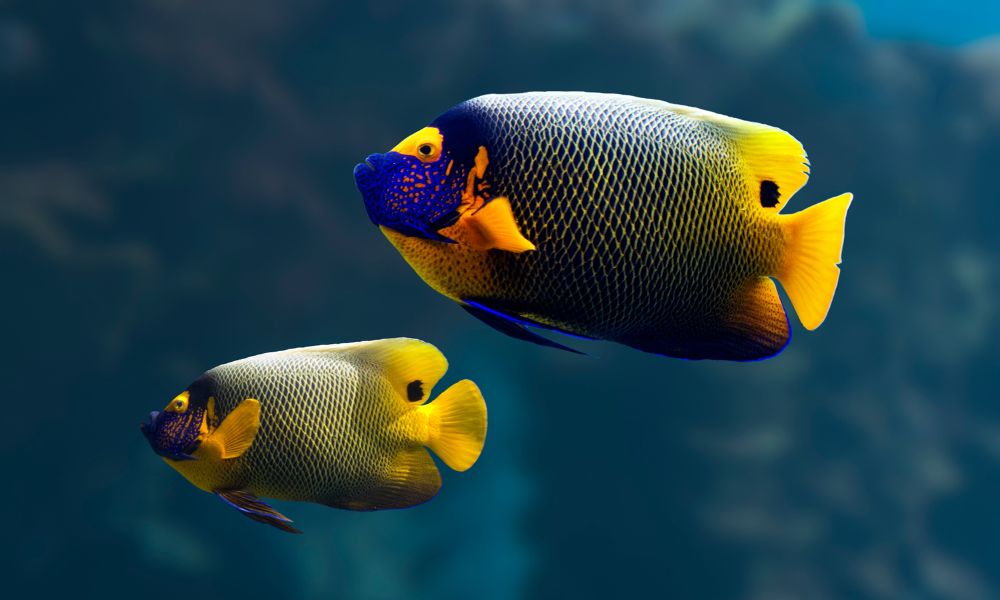
| Characteristics | Details |
| Size | Up to 6 inches |
| Diet | Omnivore |
| Temperament | Peaceful |
| Care Level | Semi-aggressive |
| Minimum Tank Size | 30 gallons |
Angelfish can be a suitable choice as tank mates for snails in larger, well-maintained aquariums. They grow up to 6 inches in size and have a semi-aggressive temperament, requiring a bit more attention to ensure compatibility.
Omnivorous in diet, angelfish generally do not pose a direct threat to snails, but their larger size and assertive nature call for a spacious environment. A tank of at least 30 gallons is recommended for these elegant fish to thrive alongside snails.
6. Mollies
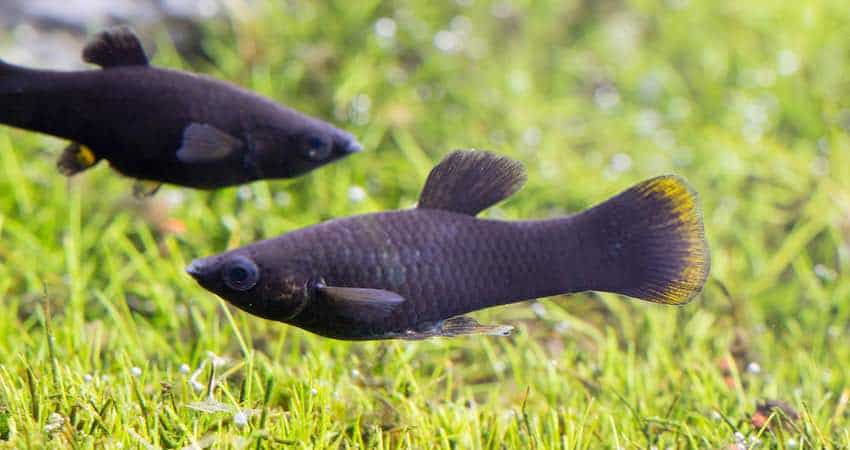
| Characteristics | Details |
| Size | Up to 4.5 inches |
| Diet | Omnivore |
| Temperament | Peaceful |
| Care Level | Easy |
| Minimum Tank Size | 10 gallons |
Mollies are an excellent match for snails in a community aquarium due to their peaceful nature and easy care requirements.
Reaching up to 4.5 inches in size, these fish are omnivores, feeding on a variety of foods, which makes them unlikely to disturb snails for sustenance. They are adaptable and can thrive in a minimum tank size of 10 gallons, making them suitable for a range of aquarium setups.
7. Platy Fish
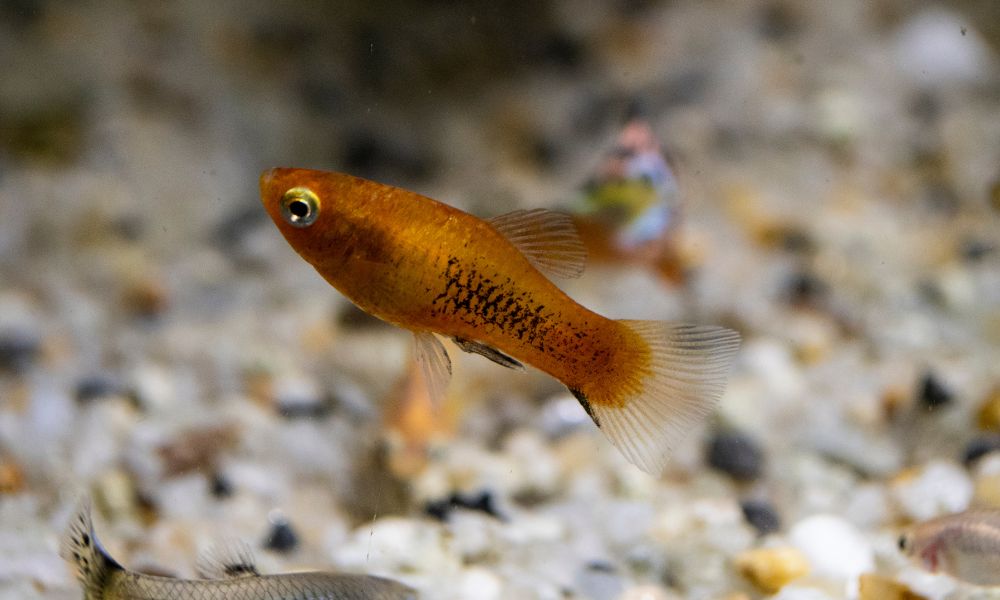
| Characteristics | Details |
| Size | Up to 3 inches |
| Diet | Omnivore |
| Temperament | Peaceful |
| Care Level | Easy |
| Minimum Tank Size | 10 gallons |
Platy Fish are a splendid choice for snail companions in an aquarium, renowned for their peaceful temperament and ease of care. These small, colorful fish grow up to 3 inches and have an omnivorous diet, which makes them compatible with snails, as they do not interfere with the snails’ food sources.
Suitable for a minimum tank size of 10 gallons, platies are adaptable and can thrive in various water conditions. Their friendly and non-aggressive nature ensures a stress-free cohabitation with snails, contributing to a lively yet serene aquatic environment.
8. Honey Gouramis
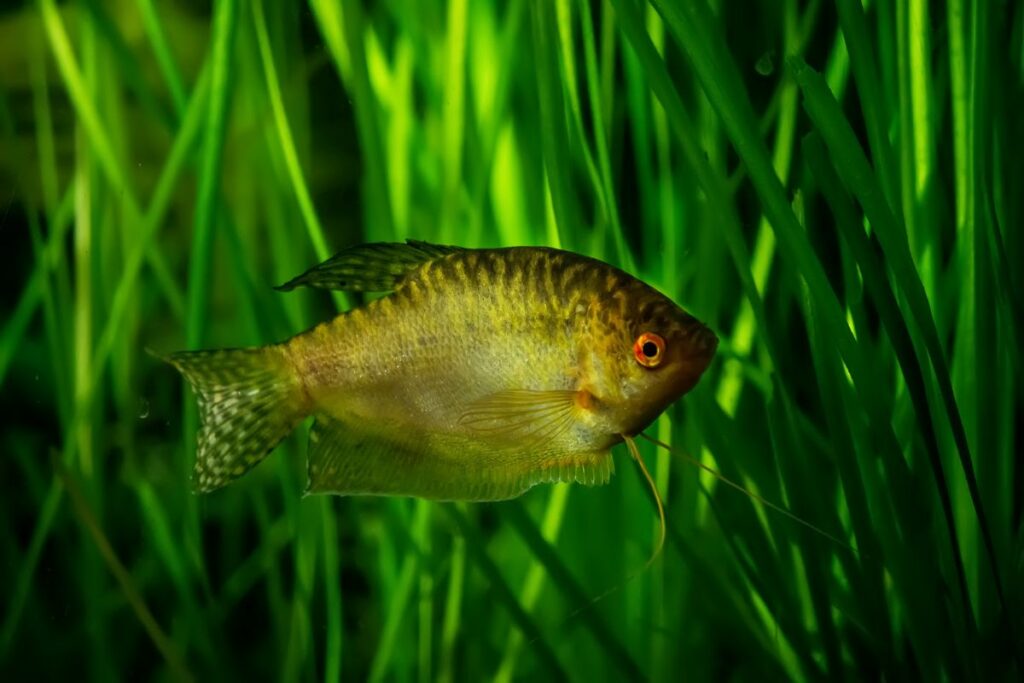
| Characteristics | Details |
| Size | Up to 2 inches |
| Diet | Omnivore |
| Temperament | Peaceful |
| Care Level | Easy to Moderate |
| Minimum Tank Size | 10 gallons |
Honey Gouramis are an ideal choice as tank mates for snails, particularly appreciated for their peaceful and calm demeanor. They grow up to 2 inches, making them a comfortable fit in a community tank.
As omnivores, their diet is compatible with the aquatic ecosystem that includes snails. They require an easy to moderate level of care, which is suitable for most aquarists. A minimum tank size of 10 gallons is sufficient for these fish, providing enough space for them to coexist peacefully with snails.
9. Cherry Shrimp
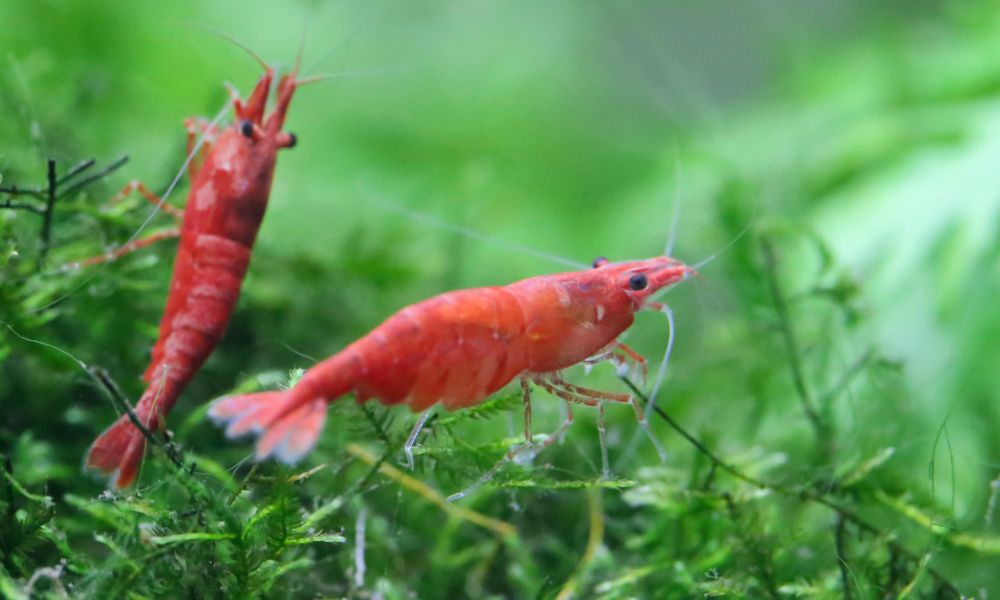
| Characteristics | Details |
| Size | Up to 1.5 inches |
| Diet | Omnivore (algae, detritus) |
| Temperament | Peaceful |
| Care Level | Easy |
| Minimum Tank Size | 5 gallons |
Cherry Shrimp are an outstanding choice as tank mates for snails, thanks to their peaceful and non-intrusive nature. These small, brightly colored shrimp are easy to care for, making them ideal for both beginner and seasoned aquarium enthusiasts.
They primarily feed on algae and detritus, complementing the snail’s diet without causing any competition for resources. Cherry Shrimp thrive in a minimum tank size of just 5 gallons, which makes them suitable for smaller aquariums.
Tank Mates to Avoid for Snails
When setting up an aquarium with snails, it’s crucial to be aware of certain fish and aquatic creatures that can harm or stress them. Here are some tank mates to avoid:
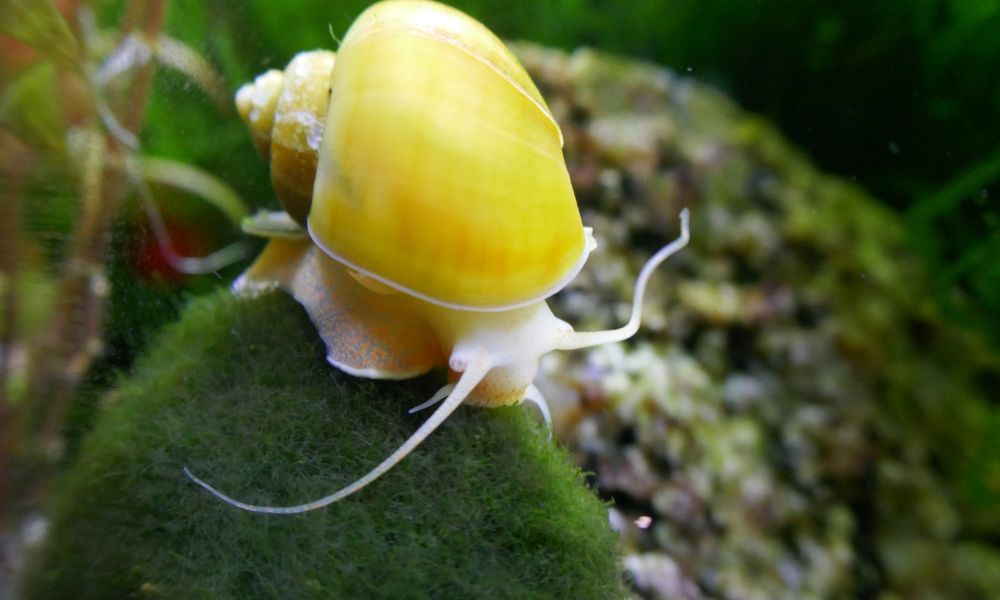
1. Large, Aggressive Fish
- Cichlids: Known for their aggressive behavior, cichlids can pose a significant threat to snails. They often view smaller creatures like snails as prey or intruders in their territory.
- Oscars: These large fish are not only aggressive but can also grow to a size that makes them capable of harming or eating smaller snails.
2. Fish with Nipping Habits
- Tiger Barbs: These fish are known for their fin-nipping behavior, which can extend to harassing snails, especially smaller or younger ones.
- Bettas: While not all bettas will attack snails, their territorial nature can sometimes lead to aggressive interactions, particularly in smaller tanks.
3. Species with High Prey Drive
- Puffer Fish: Pufferfish are known to eat snails in the wild, and this behavior can continue in an aquarium setting. They have strong jaws that can easily crush snail shells.
- Loaches (like Clown Loaches): Loaches, particularly the larger species, can prey on snails. They are often even used as a means to control snail populations in tanks.
These species are not suitable as tank mates for snails primarily due to their aggressive behavior, size, or natural feeding habits. It’s always important to research and understand the behavior of each species in your aquarium to ensure a safe and harmonious environment for all your aquatic pets.






